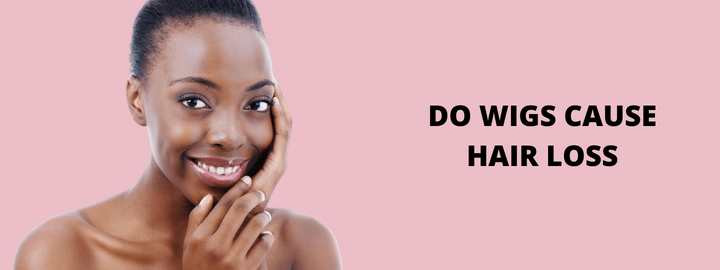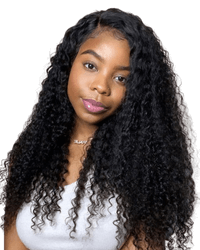Do Wigs Cause Hair Loss? That’s the most common question for wig beginners.
The answer is, No! wearing clean wigs will not cause hair loss as long as they are not too tight.
Most women wear wigs as a protective hairstyle to encourage natural hair growth. Some wear them to provide head coverage due to hair loss problems such as alopecia.
However, if you don’t properly protect your natural hair underneath the wig, it can cause damage to your hair.
Below, we outlined some easy tips to help you ensure your hair grows under a wig.
Let’s get started!
8 Tips To Help Your Hair Grow Under A Wig
Wearing wigs the wrong way may cause constant pulling or pressure on the hair follicles. As a result, you may have a bald spot, or the hair may thin out, especially around the hairline. Here are simple tips to protect your hair and make it grow under a wig. [1]
1. Right-size Wig
Wearing a hat or a wig that is too tight can tug on the hair and cause breakage around the hairline. This can make you more prone to traction alopecia. [2]
A wig can only be too tight if it is too small on the head; that is why choosing the correct wig size is essential. Do so by measuring your head to ensure the wig fits well.
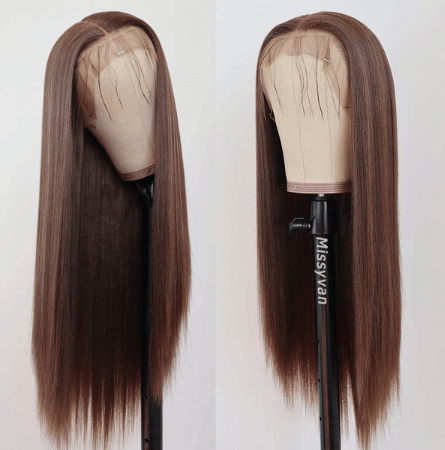
To measure the head, the first step would be using a soft measuring tape to determine your head circumference. Begin from the front of the head, then run the tape around the hairline. Ensure you braid the hair down.
Then, take the measurements from the front of your head to the nape of the neck. Also, measure from one temple of your head, towards the nape to the other temple.
Finally, take the measurements from the top of one over the head to the other ear. This last step is necessary for a lace front or full lace wig.
2. Wear A Wig Cap
It is better to wear wig caps underneath when wearing wigs. A wig cap provides a protective barrier between the wig and the hair. They establish a secure hold, reduce friction, and protect edges.
Ensure you choose a breathable cap as they are more comfortable, especially for those suffering from hair loss. These caps allow more airflow to the scalp, making it conducive to hair growth.
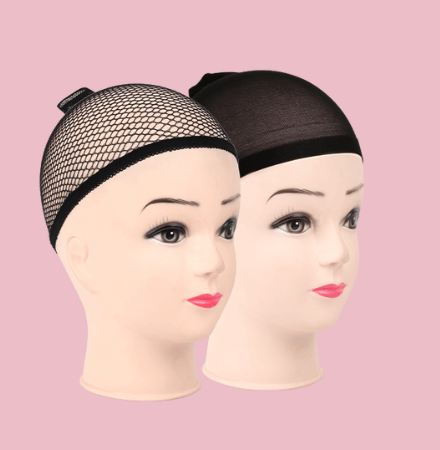
However, some wig caps can cause dryness or breakage along the hairline. To avoid this problem, get a silk or satin wig cap.
Furthermore, you can sew silk underneath the wig cap of a pre-made wig. This is practical on a lace closure wig as opposed to frontal wigs. As you will not get enough space to sew on a frontal wig since their lace runs from ear to ear.
Closure wigs usually sit on the hairline and can cause friction that can damage the edges. Sewing silk prevents moisture loss, reduces friction, and maintains hair’s natural oils.
3. Wash Regularly
You should maintain hygiene as wearing wigs can cause the scalp to sweat and create buildup. Do so by washing and conditioning your hair regularly.
Washing and keeping it clean would help remove wig glue or bonding. It also removes dirt, oil buildup, and bacteria from the hair and scalp. Moreover, taking good care of your hair facilitates blood flow to help it grow.
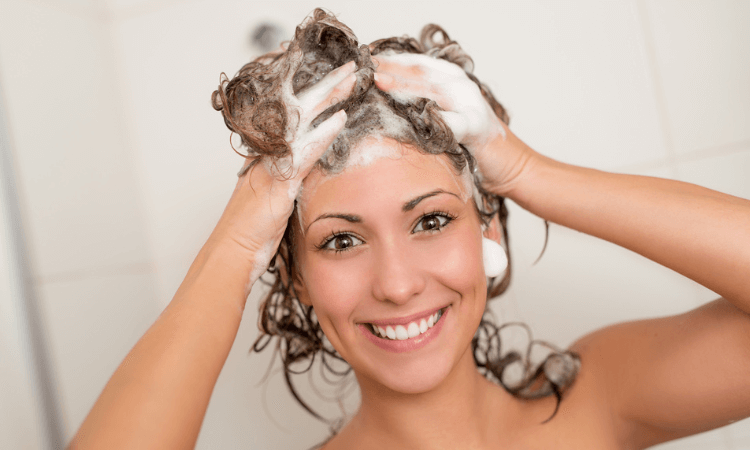
It is best to use paraben and sulfate-free shampoos. Such shampoos contain chemicals that can cause dryness and itchiness to the scalp.
After shampooing, deep condition or use a hair mask if you have dry hair. However, if you have oily hair, skip this step and use a moisturizing hair conditioner. Then, lock in the moisture using hair oil and cream.
4. Dry Hair
The hair should be completely dry every time you wear a wig.
Wearing wigs on wet hair is a common mistake among wig wearers. It is habitual, especially with those who wash their hair while still in cornrows.
If the hair does not dry properly and you wear a wig, the hair gets humid and damp. It, therefore, creates a conducive environment for the growth of bacteria. The bacteria can cause scalp inflammation and hair loss or discourage new growth.
Besides, once the wig is on, it makes it even more difficult for your hair to dry. Wet hair is also more fragile and prone to breakage.
Quick Tip: Use hair products that contain antimicrobial properties to help fight bacteria. Spritz them on your hair just before wearing a wig for effective results.
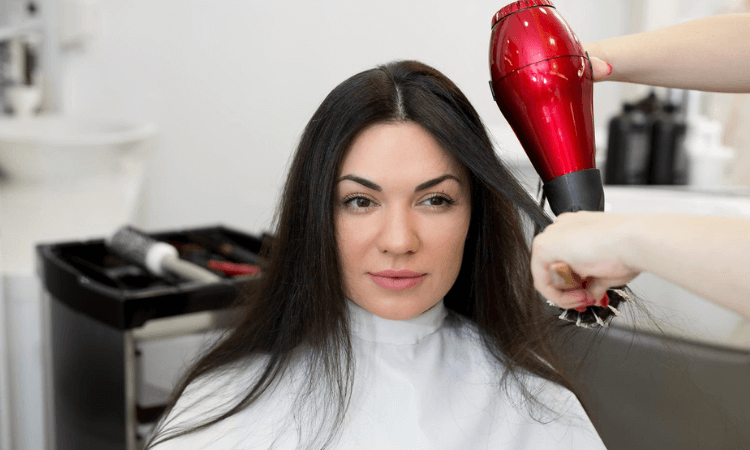
5. Scalp Massage
A gentle scalp massage before and after wearing a wig is essential. It helps stimulate blood flow to your hair and increase hair growth.
This method needs a lot of patience, and it will take around 3-4 months to notice growth. Remember that new hair growth takes time and does not occur in a day or two.
It is best to massage with essential oils as they offer the most natural way to reverse hair loss and regrow hair. I recommend using a blend of rosemary and peppermint essential oils in a carrier oil.

To massage the scalp, first, put 3-5 drops of essential oil at the center of the crown of the head. Then use your fingers to massage the area for about two minutes.
Next, use the same procedure on either side of the head. You can gradually add more drops of oil if you feel like the hair is starting to dry. Afterward, massage the back of the head and at the nape of the neck to keep blood flowing up your scalp.
Finally, go back to the center of the head and massage as you work your way outwards.
6. Wig Fix
It is best to use a wig fix to attach your wig instead of clips or adhesives to prevent hair loss or traction alopecia. These attachments are very damaging to your natural hair. They frequently end up causing hair breakage and thinning of the hairline.
Unlike clips or adhesives, the wig fix secures your wig without hurting your hair or edges.
It has silicon with a unique design that includes tiny grooves which are breathable. These grooves massage your edges as you wear them and facilitate blood flow.
This, in turn, circulates nutrients into your hair and promotes hair growth underneath.
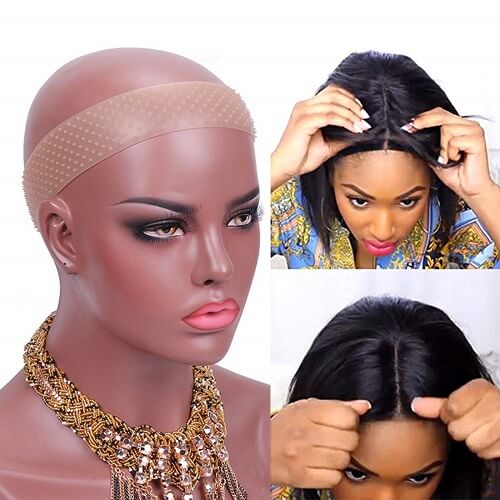
7. Seek a Trichologist
Get help from a trichologist if you have taken all precautions but still face hair loss. Trichologists have a better understanding of problems related to the hair and scalp. They will be able to give a proper diagnosis. [3]
Besides, there may be a chance that you have an underlying genetic condition. Or perhaps the hair loss is being caused by bad hair practices.
All in all, different forms of hair loss require different forms of treatment. Therefore, trichologists would be able to give a solution to help speed up the recovery. They would assist you with what products to use or avoid and what medication to take.
The earlier you visit a trichologist for diagnosis, the better. Early diagnosis would be best as traction alopecia is reversible in the early stages.
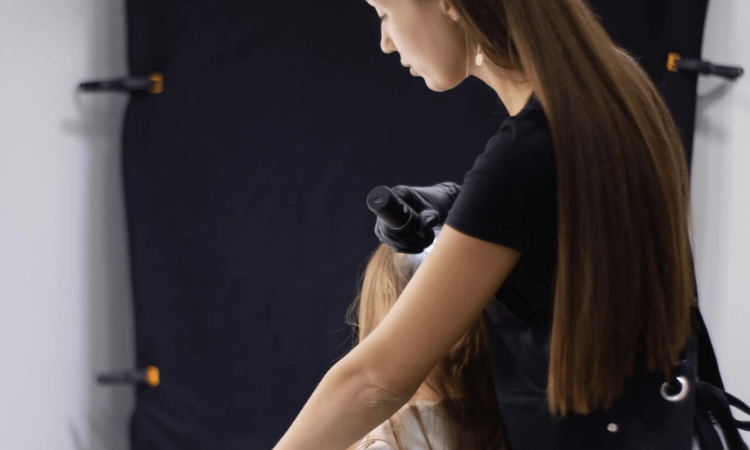
8. Have A Break
It is convenient to avoid wearing a wig always to give your scalp and bio hair time to breathe. Losing the wig occasionally will encourage blood circulation to the hair strand. The nutrients in the blood are good at promoting strong and healthy hair growth.
Also, wig breaks allow the hair to get good air circulation, thus preventing odor buildup or bacteria growth.
Also, wig breaks allow the hair to get good air circulation, thus preventing odor buildup or bacteria growth.
FAQs About Wearing Wigs Cause Hair Loss
Does Wearing a Wig Affect Hair Growth?
No, wearing a wig does not affect or stop hair growth. However, how you protect and care for the hair underneath matters. If your scalp and hair practices are sloppy, you might cause tension and breakage.
Is It Okay to Wear a Wig Every day?
It is okay to wear a wig every day as long as you protect and take proper care of the scalp and hair underneath it. Experts agree that wearing wigs daily is not bad, but you should take a break from time to time. Wig breaks help the hair breathe and encourage hair growth.
Final Thoughts
As you can see, wigs do not cause hair loss as long as you take good care of the hair and scalp. With these easy-to-follow tips, you can now protect your hair and make it grow under a wig.
Let us know your ideas about wigs causing hair loss.


